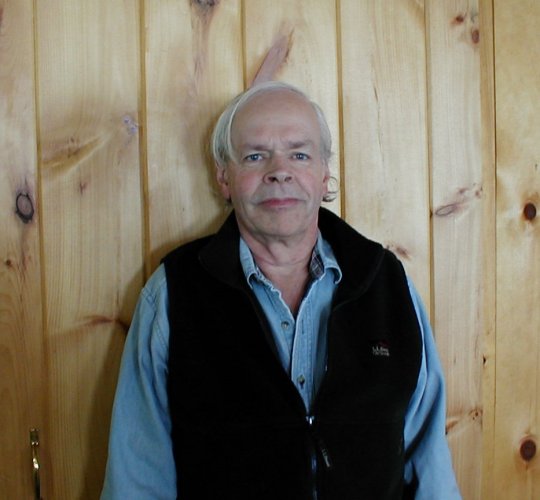This will be controversial, and those of us with an interest in church and kids and sports will need to think about its ramifications.
Anyway, here's the link to the NY Times article on the subject today.
More to follow....
Sunday, November 30, 2008
Monday, November 17, 2008
You need to look outside the church....
I think we are going to get a little wonky for a while on this blog, for one big reason: the need to figure out sports sometimes in their larger context.
One issue is historical and quite location-specific.
In New England, the birthplace of the "Park and Rec" movement in the United States, any church sports program you create will likely be competing, directly or indirectly, with a taxpayer funded sports program in your town or city.
As I indicated, the reason is historical, and likely due to the historical importance of the Congregational Church in New England -- and their rather narrow (as they, themselves, would acknowledge today) historical view of the role of the church. You can read the history yourself; let it suffice to say that this was not exactly a tolerant and fun-loving community back in its formative days. The term "Puritan" is not pejorative today for no reason!
In this under-served area the Park and Rec movement was born and developed, beginning with the Boston Common in 1651, the Boston YMCA in 1851, the Boston Sand Gardens in 1886, and the New England Park Association in 1898. Today, every New England town but the very smallest has at least one full-time employee in the Park and Rec department whose basic job is to run recreational services for the townsfolk.
Furthermore, these services are not trivial. In 2007, the Town of Salisbury, CT, the northwest-most township in the state, and entirely rural, offered the following activities via their Recreation Department: lap swimming, strength training, paddle tennis, youth soccer, basketball, indoor walking, ice skating, clinics for lacrosse and field hockey, volleyball, aerobics, Latin dance, baseball, an Easter egg hunt, a track and field clinic, sailing, kayaking, swimming lessons, swim team, tennis lessons, sailing lessons, and lifeguard training. Other organizations in the town offer travel soccer, ice hockey, and ski jumping. The Appalachian Trail runs through the town, and the town also hosts three private boarding schools (Salisbury, Hotchkiss, and Indian Mountain) with extensive athletic facilities that are occasionally available to residents, and Lime Rock Park, the auto race course. Under separate departments in the town of Salisbury are the departments that deal with elder activities and the department that runs the Town Grove, which includes picnicking facilities, boating, swimming, et al.
The annual budget of the Salisbury Rec department is $86,736 (2006).
I suspect that over the state line in New York, the offerings are a bit skimpier.
One really needs to consider the competition -- and whether the church views the town Park and Rec department as competition or not, it very much is -- when one structures a church sports program. I'll say more about this process in future posts, but this is a good place to start.
One issue is historical and quite location-specific.
In New England, the birthplace of the "Park and Rec" movement in the United States, any church sports program you create will likely be competing, directly or indirectly, with a taxpayer funded sports program in your town or city.
As I indicated, the reason is historical, and likely due to the historical importance of the Congregational Church in New England -- and their rather narrow (as they, themselves, would acknowledge today) historical view of the role of the church. You can read the history yourself; let it suffice to say that this was not exactly a tolerant and fun-loving community back in its formative days. The term "Puritan" is not pejorative today for no reason!
In this under-served area the Park and Rec movement was born and developed, beginning with the Boston Common in 1651, the Boston YMCA in 1851, the Boston Sand Gardens in 1886, and the New England Park Association in 1898. Today, every New England town but the very smallest has at least one full-time employee in the Park and Rec department whose basic job is to run recreational services for the townsfolk.
Furthermore, these services are not trivial. In 2007, the Town of Salisbury, CT, the northwest-most township in the state, and entirely rural, offered the following activities via their Recreation Department: lap swimming, strength training, paddle tennis, youth soccer, basketball, indoor walking, ice skating, clinics for lacrosse and field hockey, volleyball, aerobics, Latin dance, baseball, an Easter egg hunt, a track and field clinic, sailing, kayaking, swimming lessons, swim team, tennis lessons, sailing lessons, and lifeguard training. Other organizations in the town offer travel soccer, ice hockey, and ski jumping. The Appalachian Trail runs through the town, and the town also hosts three private boarding schools (Salisbury, Hotchkiss, and Indian Mountain) with extensive athletic facilities that are occasionally available to residents, and Lime Rock Park, the auto race course. Under separate departments in the town of Salisbury are the departments that deal with elder activities and the department that runs the Town Grove, which includes picnicking facilities, boating, swimming, et al.
The annual budget of the Salisbury Rec department is $86,736 (2006).
I suspect that over the state line in New York, the offerings are a bit skimpier.
One really needs to consider the competition -- and whether the church views the town Park and Rec department as competition or not, it very much is -- when one structures a church sports program. I'll say more about this process in future posts, but this is a good place to start.
Labels:
acceptability of sports,
competition,
history,
Park and Rec
Subscribe to:
Posts (Atom)





